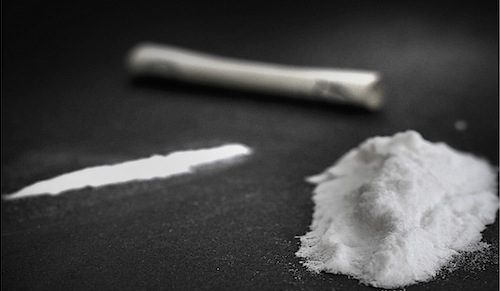« Prev Next »

In light of this – the culmination of three years of blood, sweat, tears and an exorbitant amount of caffeine – I thought I’d write this week on part of my thesis work (I promise to do my best to keep the jargon out of it!)
One of the biggest questions in addiction research is why do some people become dependent on drugs, while others are able to use in moderation? Certainly some of the risk lies in the addictive potential of the substances themselves, but still the vast majority of individuals who have used drugs never become dependent on them. This then leads to the question, is there really such a thing as an "addictive personality”, and what puts someone at a greater risk for addiction if they do choose to try drugs?
We believe that there are three crucial traits that comprise much of the risk of developing a dependency on drugs: sensation-seeking, impulsivity and compulsivity.
Sensation-seeking is the tendency to seek out new experiences, be they traveling to exotic countries, trying new foods or having an adrenaline junkie’s interest in extreme sports. These people are more likely to first try psychoactive drugs, experimenting with different sensations and experiences.
Conversely, impulsivity is acting without considering the consequences of your actions. This is often equated with having poor self-control – eating that slice of chocolate cake in the fridge even though you’re on a diet, or staying out late drinking when you have to be at work the next day.

The final component in the risk for addiction is compulsivity. This is the tendency to continue performing a behavior even in the face of negative consequences. The most classic example of this is someone with OCD, or obsessive-compulsive disorder, who feels compelled to check that the door is locked over and over again every time they leave the house, even though it makes them late for work. These compulsions can loosely be thought of as bad habits, and some people form these habits more easily than others. In drug users, this compulsive nature is expressed in their continued use of the substance, even though it may have cost them their job, family, friends and health.
People who are high in sensation-seeking may be more likely to try drugs, searching for that new exciting experience, but if they are low in impulsivity they may only use a couple of times, or only when they are fairly certain there is a small risk for negative consequences. Similarly, if you have a low tendency for forming habits then you most likely have a more limited risk for developing compulsive behaviors and continuing an action even if it is no longer pleasurable, or you’ve experienced negative outcomes as a result of it.

We can test for these traits using standard questionnaires, or with cognitive-behavioral tests, which can also be administered in an fMRI scanner to get an idea of what is going on in the brain during these processes. Behaviorally, sensation-seeing roughly equates to a heightened interest in reward, while impulsivity can be seen as having problems with self-control. As mentioned above, compulsivity is a greater susceptibility to the development of habits.
In the brain, poor self-control is most commonly associated with a decrease in prefrontal cortex control - the "executive" center of the brain. Reflecting this, stimulant-dependent individuals and their non-dependent siblings both showed decreases in prefrontal cortex volume, as well as impairments on a cognitive control task. Conversely, recreational cocaine users actually had an increase in PFC volume and behaved no differently from controls on a similar task. Thus, it appears that there are underlying neural correlates to some of these personality traits.
It is important to remember that we all have flashes of these behaviors in differing amounts, and it is only in extremely high levels that these characteristics put you at a greater risk for dependence. Also, crucially it is not just one trait that does it, but having all three together. Most notably though, neuroscience is not fatalistic, and just because you might have an increased risk for a condition through various personality traits, it does not mean your behavior is out of your control.
Oh, and I'll be going by Dr. D from now on.
--
Ersche, KE et al., Abnormal brain structure implicated in stimulant drug addiction. Science 335(6068): 601-604 (2012).
Ersche, KE et al., Distinctive personality traits and neural correlates associated with stimulant drug use versus familial risk of stimulant dependence. Biological Psychiatry 74(2): 137-144 (2013).
Smith, DG et al., Cognitive control dysfunction and abnormal frontal cortex activation in stimulant drug users and their biological siblings. Translational Psychiatry 3(5): e257 (2013).
Smith DG, et al., Enhanced orbitofrontal cortex function and lack of attentional bias to cocaine cues in recreational stimulant users. Biological Psychiatry Epub ahead of print (2013).
Image credit: Lee Morley JLM Photography and thepartycow (via Flickr). Brain images reprinted with permission from Ersche et al., 2013.























So are the tests for these traits good enough to produce some kind of quantitative estimate of a person's suscepitibillty to addiction? For example, could someone get tested and figure out if they could be "safe" as a recreational drug user (or thrill seeker)?